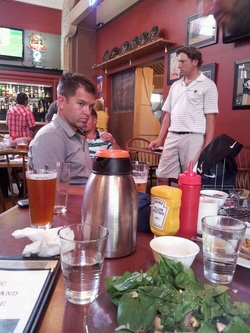 Chad Sawyer (seated) with Club President Vinny DiGiano (standing) Chad Sawyer (seated) with Club President Vinny DiGiano (standing) Sunday, October 20, 1991 This Sunday, like every Sunday before from March through November going back almost 100 years, a gathering of people come to the course by 8:00 AM to play a game. The Eastmoreland Club has long been one of the regarded group of amatuer golfers in our city. Bill Macallister, who first played Eastmoreland in the 1948 OGA Junior Championship at the age of 13, recalls the Sunday game was the place to test your mettle against the best. "Back then everybody played in Sunday Game, meat cutters, taxi drivers, wool mill operators, train conductors, TV Newscasters, doctors, lawyers. It didn't matter who you were because everyone including the members from private clubs like Waverly and Portland and Oregon would show up because this was the best game in town." What makes a game the best? Current President Vinny DiGiano would say fair competition and enough cash to make it interesting. After all, there's nothing better than sitting in the clubhouse bar and someone peels off five twenty-dollar bills for a $100 payout. "We don't play for matchsticks at Nana's house, you know!" Currently, the club plays both a "gross game" and a "net game" which means playing straight up or calculating a score net of one's GHIN handicap. The standard game is individual play with a $15 buy in and payouts going to the top 2-5 players in gross and net respectfully. We have a book that outlines the proportion of all the payouts based on the number of players and their respective handicaps. So, for example on day where 40 people show up and 10 have a handicap of 8 or less, then the payouts might be 25% to the Gross game and 75% to the net. These proportions have been negotiated often with great vigor over the years akin to the banter in house of commons. the book is essentially the ledger of thousands of rounds and golf holes dutifully recorded and measured against the payouts so the money is doled out fair and square. Of course, the winners better be buying a round of drinks for the rest of us. The club used to be co-ed with men and women members. I spoke with Carol Jolly, a member of the women's club and longtime residence of Eastmoreland neighborhood, to learn more. She explained that the Eastmoreland Club was originally set up as a co-ed club much in the way private golf courses have a single membership. The women who played were wives, sisters and friends of the guys who played in the game. While it's likely there may have been some mixed games during the year, usually the women teed off just a bit later in the morning. The heyday of the Eastmoreland club was probably back in the late 1950's and 60's... The women's club officially separated and created their own set of rules and officers in the 1960's when both clubs were growing with a sizable membership. Through most of the 1960's to the 1990's, the Eastmoreland Club games required players to demonstrate skill. The cut line was for active players to carry a handicap of 8 or lower to get in the game. To put this in perspective that is the top 4.76% of all golfers according to the USGA though a larger percentage of golfers that actually have an official GHIN (Golf Handicap Index Number - the average score over par of a players of the top 10 scores out of the most recent 20 rounds). Back then, every Sunday game was a team game, where all people in the forsome could contribute. Typically they played "3-gross" meaning each foursome tallies the 3 lowest scores on every hole for the team combined score. Other times they play "2 gross 1 net" or even "2 net 1 gross" and in more modern times "3 net" where net takes into account the holes where a player's GHIN allows him a "Pop" to subtract a stroke on certain holes (the hardest to the easiest based on the player's handicap index. To play everyone had to show up early and meet in the parking lot by old clubhouse and driving range - the "Captains" would be appointed based on having the lowest handicaps and then they would go around and choose teams, probably grouping players into 1's (Captains) 2's, 3's and 4's based on where your handicap stood up. Jest yesterday, I spoke with Doug LaMear - a longtime sports broadcaster for News 8 in Portland. He often talked about how he was a solid 8 handicap - though would find himself sometimes struggling to even make the cut. He typically played as 4-man in these games. In my research, I discovered that there was an original membership roll that included the first 100 "members" of Eastmoreland. Most of these members were members of the Multnomah Athletic Club and I hope to find the entire list someday. Look for a subsequent article on the original history of the club.
Eastmoreland Golf Course may be attributed to the dreams of Portland's elite and the tenacity of the civil servant Paul Keyser, who helped that dream become a reality for the entire populace to enjoy. yet there is one very special man - that conjured up the layout - that saw a golf course where before there was overgrown oft flooded creek bed that was adjacent to the Northern Pacific Rail lines and frequented by cows seeking pasture and relief from the sun.. This man was a champion - arguable the greatest golfer of his day - and had he chosen a different path may have been the most heralded name in golf history. He was a three time winner of the Western Open, the 1904 he was the first golfer to win both the US Amatuer and the NCAA Championship (as the captain of the Harvard Golf Team). That same year he competed with the U.S. team to win Olympic gold in the team golf match for the 1904 Summer Olympics in St. Louis. He placed second to Charles Lyon for the individual medal, and admitted he was outclassed by the older Charles Lyons booming drives.
Everyone who knew Chandler Egan described him as gentleman of pure class. He was born in wealthy family from Highland Park in Chicago, which explains his early introduction to the game at the Exmoor Country Club founded in 1896 when he was almost as a teenager. Later Egan would go on to complete in the Western Open, then played in Chicago and the Harvard team. He was the forebear and mentor to the great Harvard golf team captain the legendary Bobby Jones. Bobby attributes Chandler Egan as a mentor and role model from encouraging Bobby to attend Harvard to launching the illustrious career of the greatest Amatuer of all time and retiring at an early age. You see at the time there was a great division between the "golf pros" who basically travelled the country playing pickup games and exhibition matches for money - and the "true amateurs" who as members of country clubs played only for the sport of the game. Of course for these " true amateurs" money was simply not an object as most were born into wealthy families and thus lived a country club life no matter whether they won or lost. Chandler Egan seemed to have been appreciated by both (as the greatest pros like the greatest amateurs - since all of the greats at their very core are evenly matched against the great equalizer of golf.. Some 20 years after Eastmoreland he collaborated and helped build another municipal course, North Fulton in Atlanta, with amatuer legend Bopby Jones and pro legend Walter Hagen. So though he came from wealth and privilege much of his work in golf was towards building courses and spreading the game of golf for the enjoyment of all people. So how did a National Champion Harvard grad from a wealthy Chicago family end up in Oregon of all places in 1910? Well the exact decision and motivation does seem a bit of a mystery. After winning the US Amatuer in 1907 then runner up in 1909 - H. Chandler Egan "retired from golf" at the young age of 25 (not unlike his protege Bobby Jones would some 20 years later). His retirement coincided with the failure of his first marriage and a visit to Medford Oregon in 1909. I May of 1910 he acquired a large orchard farm of 115 acres with the intent to develop fruit orchards of apples and pears. Del Monte Fruit Company for example was rapidly expanding it's cannery business in 1906 up and down the entire west coast. So with canneries now making fruit preservable the fruit industry was seen as something of an opportunity to those from the mid-west - a yet untapped resource ready for modernization like their families before had made fortunes in the industrialized economy of the mid-west. Per the PNGA history of H. Chandler Egan: After visiting Oregon in 1910, Egan returned the following May to buy the Bates orchard for $75,000. The property included 115 acres of apple and pear trees. Perhaps the real winners in the relocation were the members of Medford Golf Club. Shortly after arriving in Oregon, Egan upgraded the Medford golf facility, and later, designed the present-day Rogue Valley Country Club.
While at Medford Country Club he started redesigning some golf holes in the early part of 1912, though the course remained a work in progress and ultimately closed down in 1917. Through this taste in Architecture and no doubt at the urging of top golfers and tournament organizers - Chandler Egan came out of riterement to play the Pacific Amatuer Championships starting in 1914:
Egan's Return: The Pacific Northwest CompetitionsIn the 1914 PNGA Men’s Amateur at Seattle Golf Club, Jack Neville displayed unparalleled play, demolishing A.V. Macan 11 & 10 in the semifinals. Shooting a course record 69 in the morning round against Egan, Neville entered the afternoon round leading 4-up. The final result was a 5 & 4 win for Neville before one of the largest galleries to ever see a golf competition in Seattle.
After Egan's 1915 Pacific Northwest Amateur championship, but he went on to win in 1920, 1923, 1925 and 1932
Egan turns to Course Architecture.
Many of the golfers H.Chandler Egan competed again in 1914 were already known golf architects. A.V. Macan was the leading course architect in Seattle and Canada and would later design Alderwood Country Club and the Columbia Edgewater CC in Portland course in 1926. H.Chandler Egan was already dabbling himself with Medforf and then brought to Portland to design the Tualatin Country Club, per Jeff Shelley's .Golf in the Pacific Northwest. 1990
Rabbi Wise, Tualatin's first president, Cecil Bauer, and George "Scotty" Junor, were the driving forces behind the original course, which was the first to plant Oregon bentgrass on the greens. Egan designed a second nine, and the Tualatin Country Club was on its way.
Through the design and construction of the new 9 for Tualatin Country Club in 1912 - H.Chandler Egan was introduced to Paul Murphy (of Ladds Estate Company) and most likely the others Portland leaders that "hatched the scheme" to build municipal golf course.
What's clear as we trace his history that Eastmoreland was not his first golf course layout - it was potentially the first entire 18 hole layout. This article won't go into depth on Chandler's layout - as we will cover that far more in depth in future articles. Later H. Chandler Egan would partner with the fabled Alister Mackenzie, architect of some of the most famous courses of all time including Augusta National, Cypress Point - and together with H. Chandler Egan - the redesign of Pebble Beach in anticipation of the 1929 US. Amatuer. This tournament again brought Egan out of retirement and he played in the US. Amatuer for the only second time in 20 years - nearly winning the tournament. H.Chandler Egan was still in his prime when he caught pneumonia building out another new golf course in Everett Washington and would sudeenly pass away due to the illness. Cite PNGA While supervising the construction of Everett’s Legion Memorial course, this gentleman of the links contracted pneumonia, and died shortly after in April 1936. The tributes paid to Egan reflect widespread appreciation for the influence he had on Northwest golf. Perhaps D. Scott Chisholm best summed up this feeling.
Upon learning of Chandler Egan's death - Bobby Jones - boarded a train for the three day ride for a memorial service and golf exhibition at his Rogue Valley Country Club. Here is a special treat - a silent newsreel documenting Bobby JOnes tribute to H. Chandler Egan.
Here's another great video documenting Chandler Egan's golf history along with a fantastic story of the U.S Amatuer of 1921 - played in St. Louis and may have drawn Egan as a tribute to his playing days for the US Olympic Team. The vignette about how Chandler might have won - had he taken advantage of the new rules that allowed him to mark and then clean his ball. He opted to leave the mud in place and perhaps, as a result, missed the ensuing putt just short and did not advance to the championship round. As the narrator states "Chan played to a higher set of rules"
|
|
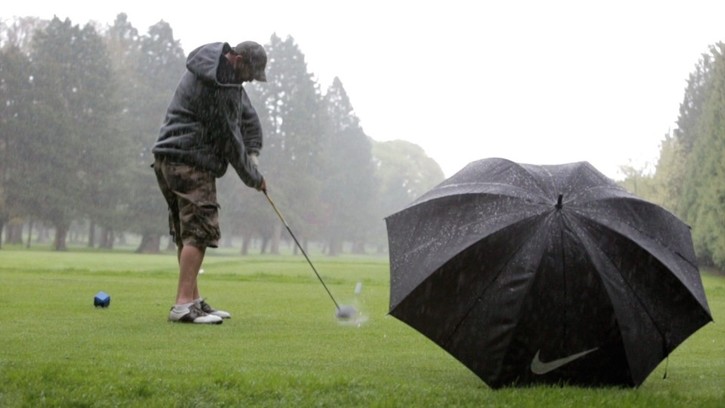
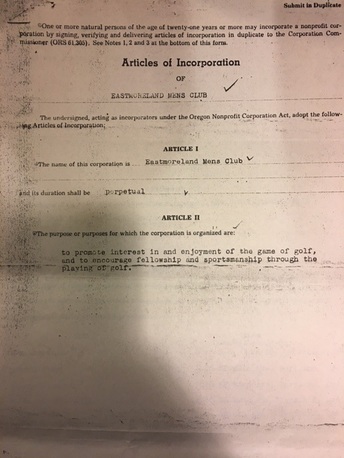
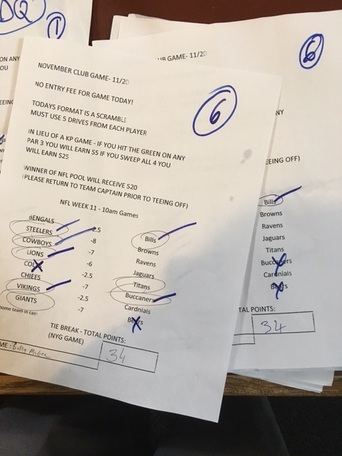
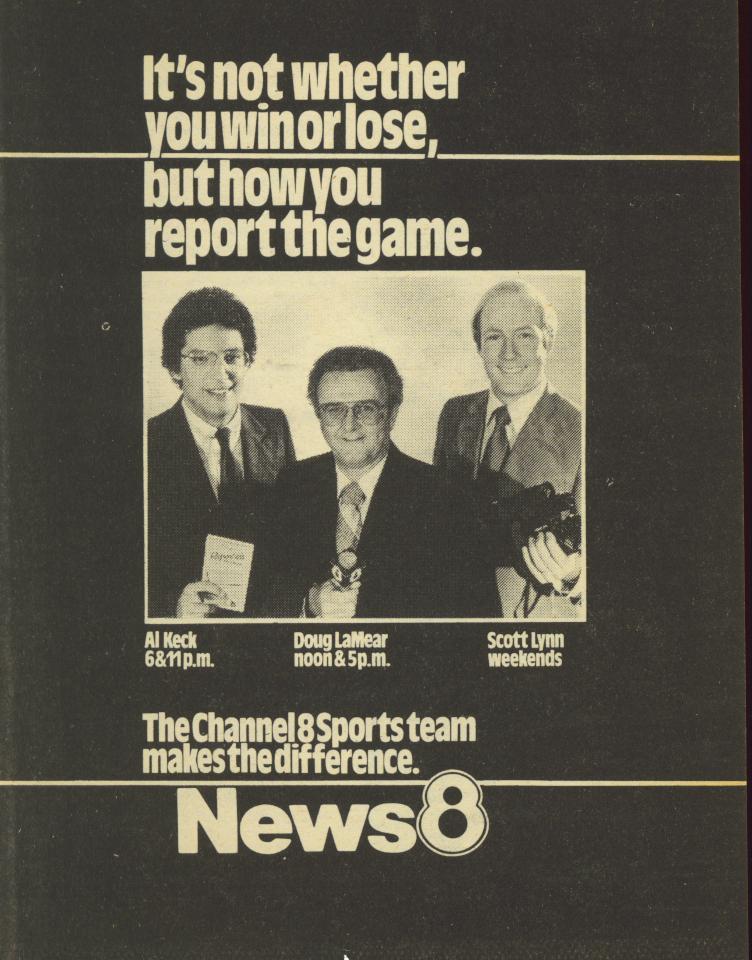
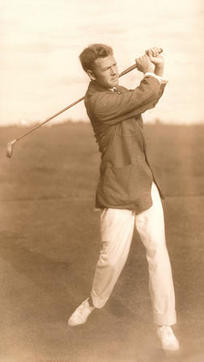
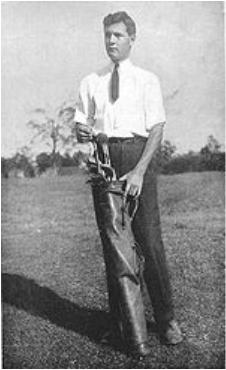
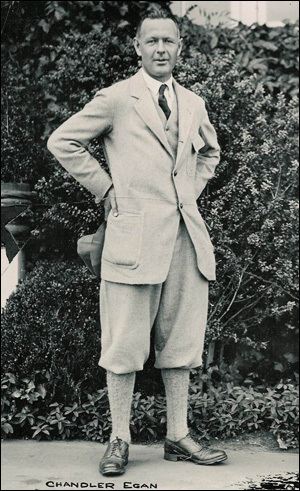
 RSS Feed
RSS Feed